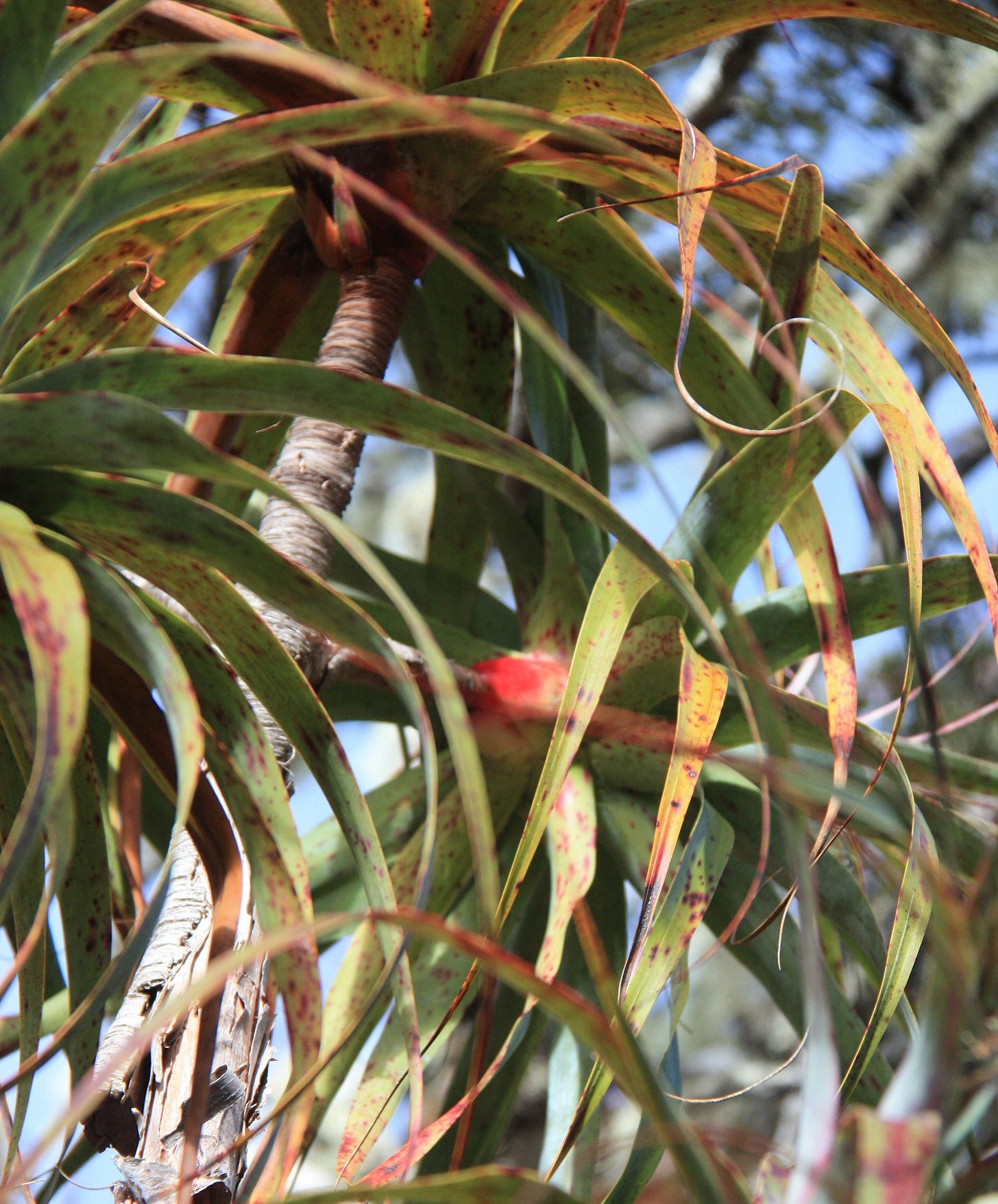When I was writing last week’s article on Dr Seuss and tī kōuka, I found myself wondering whether he had ever seen our trees before he wrote The Lorax. This sent me down a research rabbit hole – how do you find the answer to such a question? An internet search of his name and New Zealand didn’t appear to be much help at first. I learned that there was a stage show of The Cat in the Hat earlier this month and was offered links to dozens of bookshops here which carry his books. But then I searched for images, and up came a video from a visit he made to New Zealand in 1964. It brought a smile to my face – he gives some wonderful Seussian answers to the questions he is asked.
Here’s a link for the video – it’s the last one on the page.
So, it is likely that Dr Seuss had seen tī kōuka before he wrote The Lorax, a thought which delights me.
However, it’s highly unlikely that he ever saw mountain neinei trees, and that’s a real shame. These trees look even more like his creation than tī kōuka. I think that if he had seen them, he would have loved them as much as I do. But although they are found from one end of NZ to the other they aren’t the kind of tree that’s seen by the side of the road, in parks or in urban forest fragments. Mostly they are found, as their name suggests, in the mountains.
At first glance, the mountain neinei has much in common with tī kōuka. They both have skinny, bare trunks ending in a cluster of leaves. The leaves themselves are a similar shape and size, long and narrow. They are similar in flower too – dozens of tiny flowers on a branched structure on top of the leaf cluster. But, even at a distance, there’s a difference. Tī kōuka is an unusual tree, certainly, but it looks organised. Its branches mostly grow upwards, and the leaves grow straight, only curving under their own weight. It’s a tree which looks as if it has a plan, and all the branches have agreed to follow it.
In mountain neinei, every branch is a free spirit. Some grow upwards, some sideways, and some change their mind halfway. Leaves are green, and red, and spotted, and have a blue-grey sheen. Often, they are extravagantly curled. The bark is sometimes as smooth as fine leather, sometimes flaking away, sometimes incised with horizontal ridges. The eccentricity of the mountain neinei out-Seusses Dr Seuss himself.

It doesn’t end there. Tī kōuka belongs to the asparagus family. As well as asparagus, this family includes plants such as dracaena and yucca, which have a similar form to tī kōuka. It’s an unusual tree, certainly, but it’s not like the one person who turns up to a party thinking that it was fancy dress.




